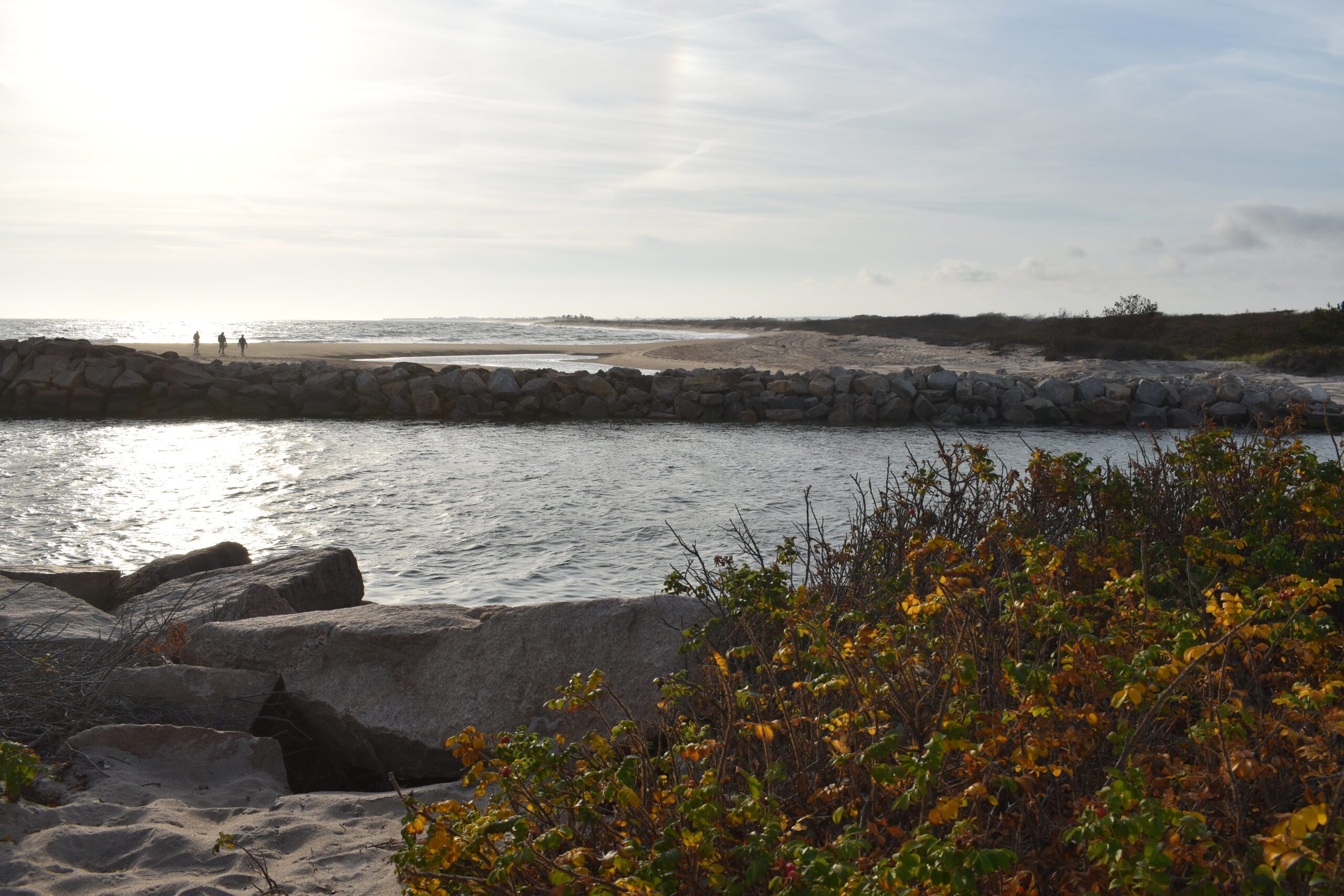Thanks to Rep. Tina Spears, we got a fix instead of a patch
By Bonnie Phillips / ecoRI News staff

The repaired section of the Charlestown Breachway. (Bonnie Phillips/ecoRI News)
When a 150-foot section of the Charlestown Breachway gave
way last winter after being battered by storms in late 2023 and early 2024, the
results were immediate: sand from the beach washed into the channel, making it
shallower and dangerous for boaters to navigate, and affecting the health of
Ninigret Pond.
The breachway channel connects the Atlantic Ocean and
Ninigret Pond, a vital ecosystem that acts as a nursery for a variety of fish
and shellfish and is home to commercial aquaculture farms. It’s surrounded by
the Ninigret National Wildlife Refuge, the Ninigret Conservation Area, homes,
and marinas. A variety of groups, including recreational boaters, recreational
anglers, shellfishers, and birders use the pond and fish from the breachway’s
jetties, considered one of the best saltwater fishing areas in the state.
The town had been worried about the state of the breachway
since Superstorm Sandy came through in 2012. Recognizing what could happen if
the most recent damage wasn’t repaired, the town began working with the Coastal
Resources Management Council to discuss ways to fix the seawall.
“We’ve been studying it all summer long,” said Steve McCandless, Charlestown’s geographic information system coordinator, speaking to a crowd gathered at the breachway Wednesday evening to hear an update on the repairs hosted by Rhode Island Sea Grant.
The audience, wearing a mix of shorts, down jackets, and
flip-flops on an initially balmy evening that turned progressively chillier,
listened intently as McCandless; Emily Hall, a coastal geologist for CRMC; and
Alicia Schaffner, executive director of the Salt Ponds Coalition, discussed the
project.
The overall goal, Hall said, is to make the breachway more resilient and better able to withstand increasingly damaging storms by repairing the seawall, enhancing the barrier dune habitat, and dredging the channel to remove some of the sand that came though the breach.
The project received a grant to fund the design portion,
McCandless said. Then, in August, the Rhode Island Department of Environmental
Management joined the discussion, largely thanks to the efforts of Rep. Tina
Spears, a Democrat who represents District 36, which includes Charlestown,
McCandless said.
“Believe it or not, this was actually a really fast
turnaround for bureaucratic agencies,” Hall said. “For one, we have been
regularly meeting since about mid-summer. We knew that this was a problem.
Forty percent of the state’s aquaculture is actually in the pond behind me.”
The area’s popularity was evident as Hall spoke, with two
people fishing off a small boat in the pond while saltwater anglers lugged
their large poles to fish off the breachway’s seawall.
The pond, said Schaffner, is also an important habitat for
different species, from shellfish to flounder to crab.
The breach in the seawall reduced the flow of water into and
out of the pond, which in turn led to a deterioration in water quality by
decreasing dissolved oxygen in the pond and increasing the water temperature
and nutrient and bacteria concentrations. The results: increased algal blooms
and a decrease in the pond’s health.
“Without that circulation, without that flow, we don’t have
any healthy ecosystem for those animals to live in,” Schaffner said. “I know
how important the ponds are, not just for the animals, but also for the people
that utilize them.”
The original plans for the seawall repairs submitted by the
town to the CRMC, Hall said, called for sandbags instead of rocks.
Although CRMC issued the town a permit to install the
sandbags, Hall said such a plan wasn’t ideal.
“You know they’re not going to last through those storms
like we had just last winter,” she said. “They were able to find the money
after a couple unfortunate accidents that were happening out here, and … everyone
realized it was a big deal, and the money came through.”
The plan changed from using sandbags to using rocks to
shore up the damaged section of seawall.